This is a free fortnightly newsletter about the New Zealand Net. If you would like to be notified by email when a new edition is published, please contact ZL1NZ.
Browse our Newsletter Archive and List of Net Tips.
Featured key
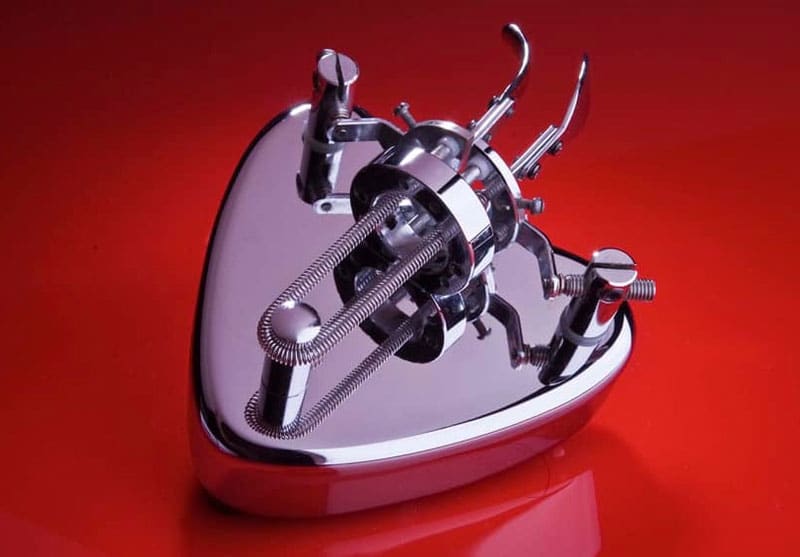
Modified Bencher dual-lever paddles. Photo: G4ZPI
By Dave G4ZPI
Here’s a photo of my modified Bencher that I use on air daily. The base is twice as thick as the original for extra weight and to raise the height of the paddles. The base in front of the paddles is recessed to allow greater access. The paddles are made from desert spoons, the dash paddle is shaped like the trigger of a gun, and the dot paddle is a full sized spoon handle.
The idea came from my friend Arnold G4SPY – we both just wanted a key that fitted the hand, rather than making the hand suit the key. Two units were made with very slight differences due to preferences. These were produced about eight years ago.
* If you have an interesting key for this feature, please send me a nice clear photo and a few words describing it.
Quick notes
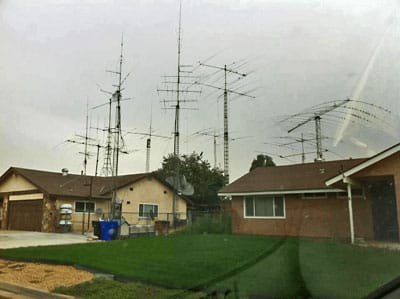 Steve ZL2KE has been working on his antennas. See below for his article.
Steve ZL2KE has been working on his antennas. See below for his article.
Photos wanted. I am thinking of a new game, where people try to guess the identify of an NZ Net operator based on an old photo. So, please send me a photo, the older the better.
Did you know that in the early 2000s, ZL hams outnumbered VKs in the membership of FISTS? That began to change about ten years ago and today there are 54 ZL members and 168 VKs. (Thanks to David ZL2WT for that information, contained in his article about FISTS Down Under in the March/April Break-In.)
The Sangster Shield QRP CW contest will be held next weekend, 21 and 22 May, 0800-1100Z (2000-2300 hours NZT) on 80 metres. All contacts must involve at least one NZ station, who must be a current member of NZART. Get details.
The W6SFM Bug Roundup is not a contest but participants are encouraged to get on the air and simply make enjoyable, conversational QSOs using a bug. The event begins at 0000Z on 20 May and concludes at 0000Z 22 May (Noon Friday to Noon Sunday NZT). For more information, to register your station, or to help in spotting (potentially increasing QSOs) an online chat link can be found near the bottom of the Bug Roundup homepage (the chat link will go live when the roundup starts).
VKCW Net has moved to 14.049 MHz. This net, which has been operating on 14.349 MHz, can be found on its new frequency every Wednesday at 0600Z. Check-ins from all stations are welcome, and the net can handle formal traffic.
Photo flashback

Morse School at the Post Office training centre within the Trentham military camp, May 1948. The people with an asterisk after their name went on to work in the radio sector. Standing at the back: Assistant instructor Jack Douglas (ex ZLW/ZLC/ZLB). Back row from left: Don George, Ken Eustace, Stan Allen* (ZLW), Bernie Harding, Ian Hudson, Tom Scott* (ZLD/ZLW/ZME). Front row from left: Des Dufty, Clyde Williams* (ZLW/ZME/ZMV/ZLC/ZKR-briefly 3 weeks 1955), Doug Pellow* (ZLB), Eric Bissett, Jack Gardner* (ZLW/Radio Section/RI NA), Lloyd Nelson. In front: Merve Walsh.
Clyde Williams ZL2UQ, who provided this photo, died last December in Levin. He had a fascinating career in radio before moving into “electronic data processing” at the NZ Post Office in 1964. Blessed with an excellent memory, in his later years he wrote a number of articles for maritimeradio.org, covering his experiences working on Raoul Island, at Milford Sound and on the Chatham Islands, among other places.
Net numbers
In April, the NZ Net recorded 186 check-ins by 18 stations, with 68 messages handled. The last session in April was our 809th since the Net began in March 2019.

In order for the stats graph to remain readable, it will from now on include only the latest 36 months of data.
Here is the monthly report for April:
NR15 R ZL1NZ 45/42 AUCKLAND 0900Z 2MAY22 = NZ NET = APR QNI VK3DRQ 19 VK4PN 8 ZL1AJY 5 ZL1ANY 14 ZL1BWG 20 ZL1NZ 21 ZL1PX 3 ZL1RA 7 ZL2GD 13 ZL2GVA 19 ZL2KE 7 ZL2LN 7 ZL2TE 7 ZL3TK 21 ZL4CU 6 ZL4FZ 1 ZL4KJ 3 ZL4KX 5 TOTAL 186 QTC 68 = ZL1NZ
Ian Sexton ZL1PZ, WW2 veteran, SK
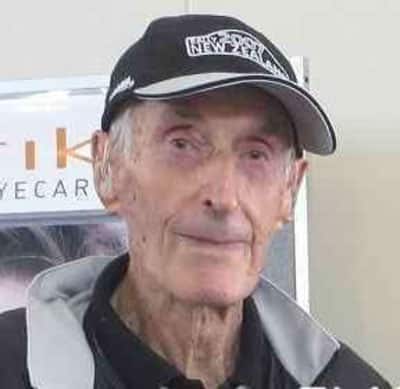 Ian Sexton, a radar mechanic and pilot during World War 2, and a founder of the Franklin Amateur Radio Club, died on 10 May, less than two months short of his 102nd birthday.
Ian Sexton, a radar mechanic and pilot during World War 2, and a founder of the Franklin Amateur Radio Club, died on 10 May, less than two months short of his 102nd birthday.
Ian’s interest in radio arose while he was still in school in the 1930s. He obtained his amateur licence on the day war broke out, 1 September 1939. Much to his chagrin, the New Zealand Government immediately banned all amateur transmissions so he was unable to enjoy his hobby until after the war ended.
Ian was a stalwart of the FARC, and could be heard conducting the club net on 2m from his retirement village home until very recently.
Here is an audio interview with Ian about his wartime experiences. (Interview starts at 3:22.)
New on the Masterton skyline
By Steve ZL2KE
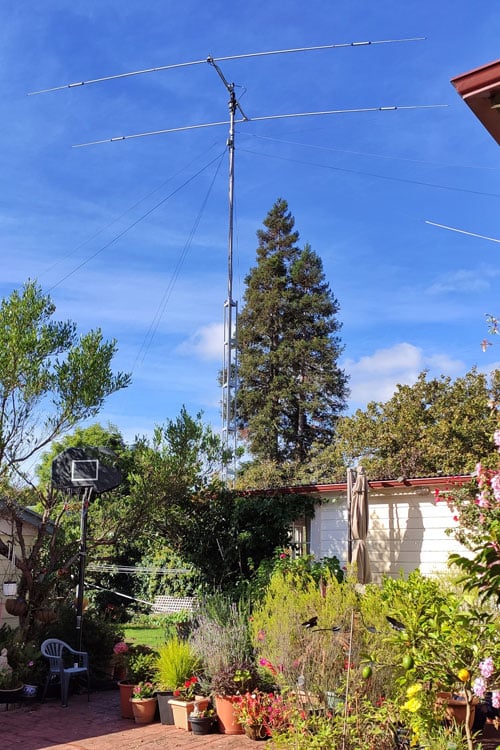 Last year there were indications that the solar cycle was on the way up, out of the dismal low solar flux trough. The question on my mind was: “how could I prepare my ham radio set-up for the better conditions?”
Last year there were indications that the solar cycle was on the way up, out of the dismal low solar flux trough. The question on my mind was: “how could I prepare my ham radio set-up for the better conditions?”
Next year will be my 60-year anniversary of ham radio operating and it occurred to me that the peak of Solar Cycle 25 could be the last one that I experience. With an Acom Amp and IC-7300 already in my shack the obvious upgrade would be a HF yagi.
A tower was available from a local ham’s estate, and I knew of a Japanese triband yagi available over the hill in Lower Hutt. A second-hand but like-new G-1000 DXA rotator came from Napier.
Since the tower only had the lower section I had to get an engineering company to make the upper section and a tilt-over base. Unfortunately this involved many consultations and complications with the engineer so his “I’ll have it ready for you in a couple of weeks” became a frustrating four months.
The completed structure is 11m tall, the maximum permitted by the local council.
It is a steel tower, strong but very heavy! It took a long time for me to properly attach an electric winch to the house in order to raise and lower the tower. It sure would be nice be like the American hams who can simply order a light weight telescoping aluminium tower and have it delivered.
I am fortunate to have an XYL who totally accepts my ham radio activities and while she never complained about the tower she found it incredible that I actually managed to get the tower working on my own. It was indeed quite an accomplishment for me, a ham with limited construction skills.
Unfortunately the 3-element Japanese tribander in Lower Hutt was over 25 years old and had metal galling which meant that the elements could not be disassembled for car transport, and commercial transport would not deliver from/to residential addresses. Plan B was to use an Australian two-element TE-23 triband yagi, also in Lower Hutt, which will be expanded to three elements; this yagi was also second-hand but could be disassembled for car transport.
If our back section was more spacious, I would put up a multi-element yagi for all bands including 30, 17 and 12m. The garage, vegetation, and brick BBQ all limit the size of boom and elements. A larger yagi would also have more wind load during storms and more weight for the winch to pull up.
The big question is “How well does it work?”
With only two elements I was not expecting a great improvement as my 20m inverted V had been performing well. It was a pleasant surprise to find that the yagi significantly out-performs my wire antennas. I have had great DX success with my yagi! Good signal reports have been received from European stations on 10m and from many contacts on 15 and 20m. There must be more than the stated 6 dBi gain, due to the fact that the yagi elements are horizontal, high and in the clear, rather than an inverted V sloping down towards the roofs. In conclusion, I am very glad to have an improved HF antenna for the good conditions Cycle 25 will bring.
Audio challenge
Your challenge is to tell me who said this. It’s a New Zealander. Send your answer via radiogram or, if no propagation, by email.
Answer to previous Audio Challenge:
The station calling CQ was Bahrain Radio A9M, as correctly reported by ZL1ANY, ZL1BBW, ZL2GVA and ZL3TK.
8WPM Net getting new CW ops on the air
 By Peter ZL1PX
By Peter ZL1PX
A few weeks ago, Garry VK4GAZ contacted me by email to ask for my help. Garry wanted to achieve his Centurion award in Straight Key Century Club. He had already made contact with 99 other SKCC members and asked me if I would be his 100th contact.
Garry assured me he would not be sending too quickly. His straight key delivery was 12 WPM – about the same speed as mine – so I agreed to his request.
A few days later, on a rainy Sunday evening, I heard his call on 7032 kHz and we completed the QSO. I used my old NZ Post office key to ensure the QSO followed SKCC rules. A delighted email a few days later told me Garry had received his official Centurion certificate.
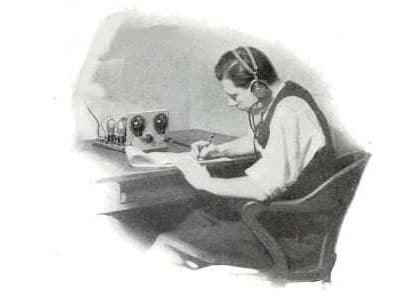 This got me thinking how important it is for CW operators to be at a similar operating speed.
This got me thinking how important it is for CW operators to be at a similar operating speed.
When I graduated from Morse school, I had to look hard to find people whom I could work. Most ops on the 80 and 40 metre bands were going like greased skateboards. Even when I sent QRS in my nervous CQs, most still replied at nearly twice my speed.
What could I do?
Well, three weeks ago I started 8WPM Net.
Our first session was Wednesday 20 April at 8pm. Five of us checked in. We each sent a sentence on the topic of ‘Today?’ to the group. I did my best at being net controller and missed a few cues but it seemed to work.
We followed that with a second meeting on Wednesday 27 April. We were better prepared for this one as we followed a ‘cheat sheet’ which I had emailed to everyone the weekend before. What the sheet showed members was a more structured way to check in, rather than a simple callsign. There were four of us on this net, and our topic was ‘At School?’.
Our most successful net so far was on Wednesday 4th May. For this one, we each shared something about our ham radio experience. Six members – including myself – checked in.
What good has all this net activity achieved? I know most of us can actually go faster than 8wpm and do so but that is not important. What matters is we are actively engaged in sending and receiving. We have a place we can go to every week. We are building confidence. We are creating muscle memories with our keys.
Best of all we make friends with our fellow ops.
8WPM runs on 3545 kHz each Wednesday at 8pm. Email ZL1PX for topic and cheat sheet.
» New Zealand HF Net Directory
Video: Rugby wireless station (1932)
Net tip: QNY with multiple messages
It sometimes happens that a station will list more than one message for another station, or that two stations will list a message for each other. Here’s how we handle such situations.
Recall that the QNY signal means “Shift to another frequency (or to _____ kHz) to clear traffic with _____.”
Strictly speaking, QNY does not specify who will be sending or who will be receiving the traffic or how many messages are to be sent. But, the expression “clear traffic with…” indicates that the two stations are expected to send and receive all the messages they have for each other.
Let’s look at how this works in practice. Assume ZL1ANY has listed QTC1 for ZL2GVA. Then ZL2GVA checks in. Net Control will take ZL2GVA’s check-in, then reply with:
ZL2GVA GE GERARD 596 QNU (the net has traffic for you) = ZL1ANY QNY U5 ZL2GVA
Notice that even though Net Control could have asked ZL2GVA to QNY with ZL1ANY (since they were already talking to ZL2GVA), we have adopted the above approach on NZ Net to indicate who is going to transmit (the first callsign in the QNY message) and who is going to receive (the second callsign).
Even if there are messages to be sent both ways, we still use the above instruction, because somebody has to go first, and logically it should be the station that listed their traffic first.
Having changed frequency, ZL1ANY would send their message(s). If there is just one, the message ends with <AR> NM (no more). If there is one more message to send, then the first one ends with <AR>1 (the number indicates how many more messages are to be sent).
If ZL2GVA copies the last message and has nothing to send in reply, he sends QSL [msg number] QRU. If he DOES have traffic to send, he would send QSL [msg number] QTC [number of messages to send] QRV?
If all traffic is passed, the stations return to the net frequency, checking in with “QNI” (or “QRU” would be OK too). If a message didn’t get passed for some reason, the station with traffic still to send would check in with “QTC…” so that Net Control knows there is still traffic to be cleared and can deal with it accordingly.
I hope that makes sense. Funny how things always sounds more complicated when you write them out! If you have any questions, give me a shout.
Advertising archive

Ham Radio magazine, March 1978
The Bencher BY1 dual-lever paddle is a true classic. More than 44 years after this advertisement was published, you can still buy a new one, although the price has gone up a bit, to US$179.95.
Suggestions?
If you have suggestions on how to make the NZ Net better, or things you’d like to see covered in these updates, please contact ZL1NZ. You might even like to write something for the newsletter.
Thanks for reading, and I hope to hear you soon on the NZ Net!
—
Neil Sanderson ZL1NZ, Net Manager
New Zealand Net (NZ NET)
3535.0 kHz at 9pm NZT Mon-Fri




